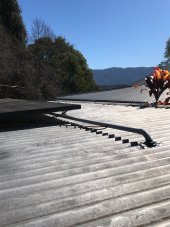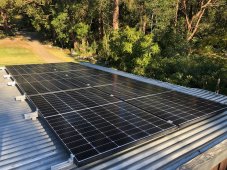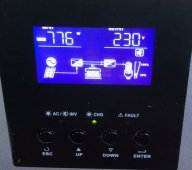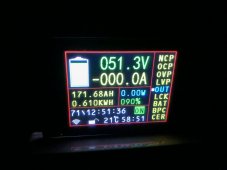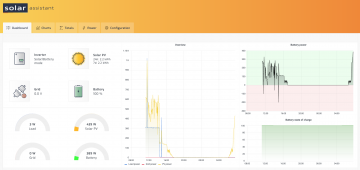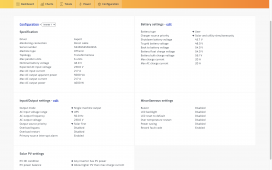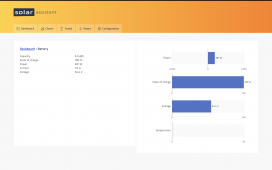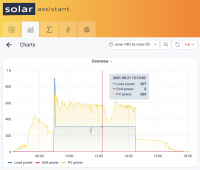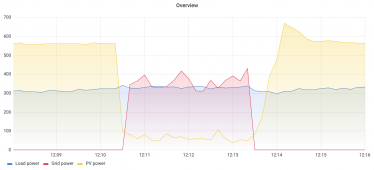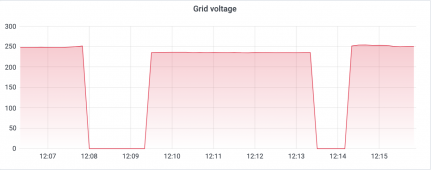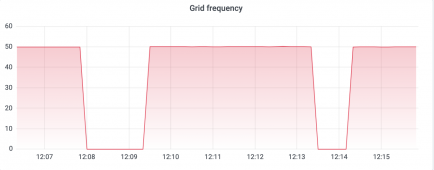wattmatters
Solar Wizard
Finished off the conduit run today. Some pics this time:
Combiner box inside garage:
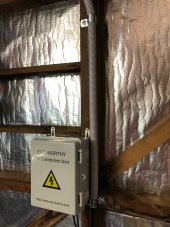
It's a "value" choice box. It all seems in order and the cables are secure.

DC conduit run exiting garage:
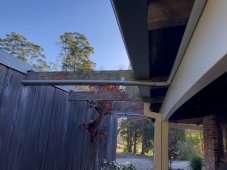
and then all along the facia board to other end of house:
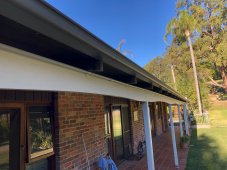
Conduit will be getting painted to match the facia. But I think I've made a rookie error - I just realised I haven't allowed for expansion joints... The far end exits into some flexi conduit, perhaps that will be enough but I'll have to see how it fares come Summer heat. If I notice some conduit bending I'll retro fit some expansion joints.
And near the inverter housing I have a DC isolator switch which is on the wall under the 2m wide eave:

And from there the conduit extends to the inverter inside its housing.
While it's already connected to the inverter, I want to redo the terminal connections but not today. I have to disconnect and move the battery bank to do that and it's a bit of an awkward job. With other work I needed to do, this was enough.
I have my extra solar panel rail clamps now so the the last 2 panels can go up when I'm ready. I think I'll put the rails up but leave fitting those 2 panels until last as I need to work out my cable management for the 4 panels which are already in situ. Still waiting for my PV cable extensions to arrive, which are due to arrive in next couple of days.
Once I have those then I can finish off this job, switch on the panels and fingers crossed I haven't screwed anything up. I'll do a few multimeter checks on voltage polarity just to be sure.
Combiner box inside garage:

It's a "value" choice box. It all seems in order and the cables are secure.

DC conduit run exiting garage:

and then all along the facia board to other end of house:

Conduit will be getting painted to match the facia. But I think I've made a rookie error - I just realised I haven't allowed for expansion joints... The far end exits into some flexi conduit, perhaps that will be enough but I'll have to see how it fares come Summer heat. If I notice some conduit bending I'll retro fit some expansion joints.
And near the inverter housing I have a DC isolator switch which is on the wall under the 2m wide eave:

And from there the conduit extends to the inverter inside its housing.
While it's already connected to the inverter, I want to redo the terminal connections but not today. I have to disconnect and move the battery bank to do that and it's a bit of an awkward job. With other work I needed to do, this was enough.
I have my extra solar panel rail clamps now so the the last 2 panels can go up when I'm ready. I think I'll put the rails up but leave fitting those 2 panels until last as I need to work out my cable management for the 4 panels which are already in situ. Still waiting for my PV cable extensions to arrive, which are due to arrive in next couple of days.
Once I have those then I can finish off this job, switch on the panels and fingers crossed I haven't screwed anything up. I'll do a few multimeter checks on voltage polarity just to be sure.



